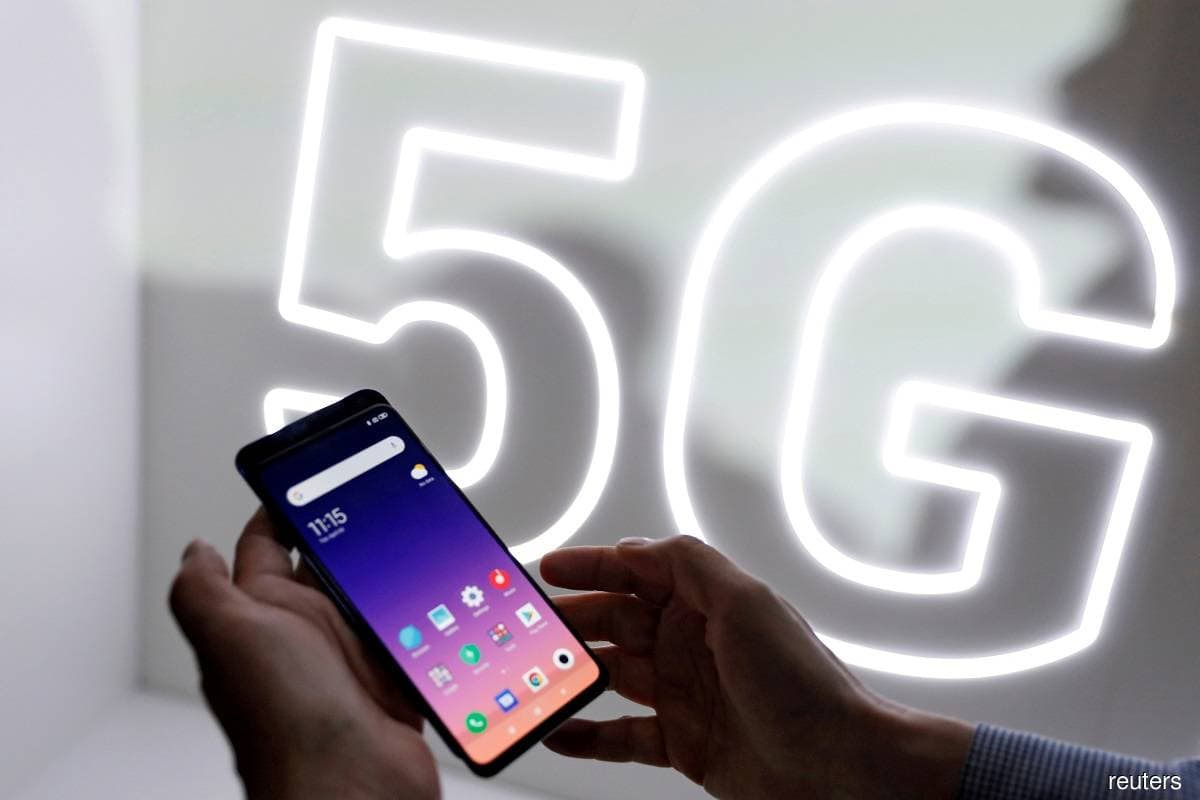
KUALA LUMPUR (Feb 14): Kenanga Research sees downside earnings risks for mobile network operators (MNOs) over the next three to five years if the government opts for a single wholesale network (SWN) model.
This is mainly because the MNOs may have to pay upfront wholesale costs to Digital Nasional Bhd (DNB), even if they are slow to monetise 5G services, the research house said in a note on Monday (Feb 14).
Noting that there is no clear guidance on when the government's final decision on the model to be adopted for the nationwide 5G network roll-out will be announced, Kenanga expects it to be in February or March.
"We opine that the government will most likely opt for the SWN model," said the firm, adding that it foresees numerous factors that pose downside risks to MNOs' near- to medium-term (three to five years) profitability.
One factor, said Kenanga analyst Lim Khai Xhiang, is that MNOs have limited room to raise average revenue per user on 5G services.
He predicted that the MNOs' 5G services will not meaningfully lift service revenue as the telcos are unlikely to raise 5G plan prices, due to stiff competition and the fact that it will be going against the government's desire for affordable 5G mobile services.
Lim also said that because the SWN is supply-driven, he foresaw that in the initial years of the roll-out, MNOs may have to pay upfront wholesale fees while not earning much from 5G services due to potentially slow 5G adoption due to limited adoption of 5G handsets, and continued price competition from smaller MNOs and mobile virtual network operators.
"This puts the MNOs in a position where the incremental costs could potentially exceed incremental revenue," said Lim.
Another potential risk cited by Lim is accelerated depreciation and amortisation (D&A). He noted that the MNOs' networks are currently 5G ready, as they have been procuring 4G/5G compatible equipment and preparing their networks for 5G.
"While we believe meaningful portions of their current networks will be merged with DNB's multi-operator core network, there's a risk that the MNOs will see continued accelerated D&A [thus higher D&A expenses] on existing assets, such as existing spectrum, if they cannot be repurposed for 5G, or if their useful life is shortened in light of the SWN approach," he said.
Lim also touched on capital expenditure, saying that in the coming four to five years, he foresaw MNOs spending their current levels of capex of between RM800 million and RM1.2 billion per annum on continued 4G expansion and network modernisation, especially as 4G traffic continues to grow, and on JENDELA initiatives to bridge the rural-urban digital divide.
"Together, we believe these factors pose downside risks to the MNO's profitability in the near/medium term," he said.
Lim maintained a "neutral" view for the telecoms sector, saying Kenanga has largely factored in the downside risks into lower valuations.
"However, that said, should these risks turn out to be worse than expected, that poses further estimate/valuation downside risks to the domestic-only MNOs, namely Digi.Com Bhd and Maxis Bhd, and to a limited extent Axiata Group Bhd," Lim said.
"Key upside risks to call include earlier-than-expected ownership stake transfer of SWN to MNOs, and the cancellation of SWN, both of which we think are highly unlikely," he added.
Lim's top pick for the sector is Axiata due to its regional and digital businesses that provide hedge against said developments, which mostly impact domestic-only MNOs.